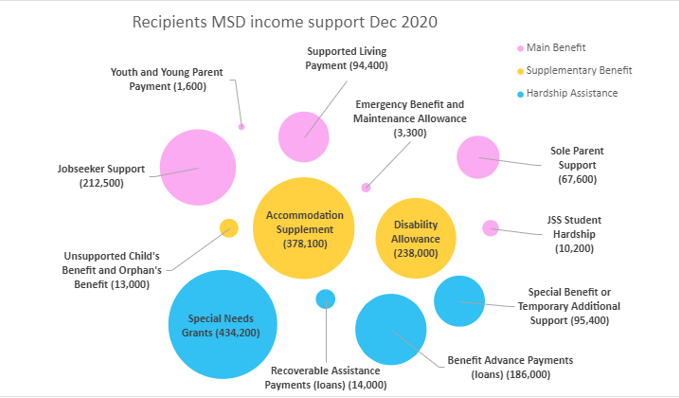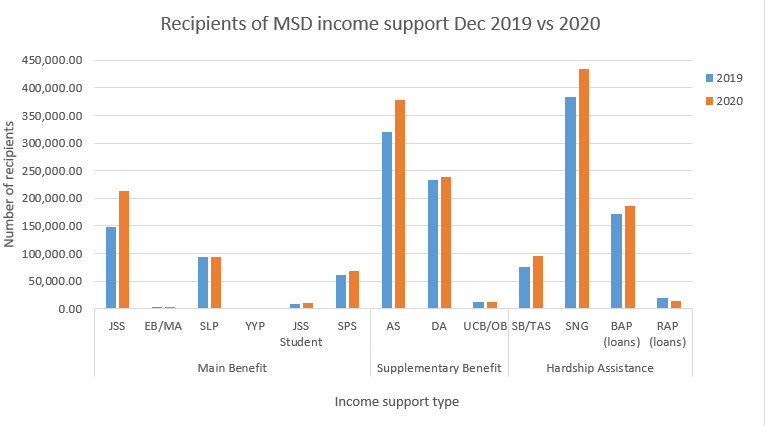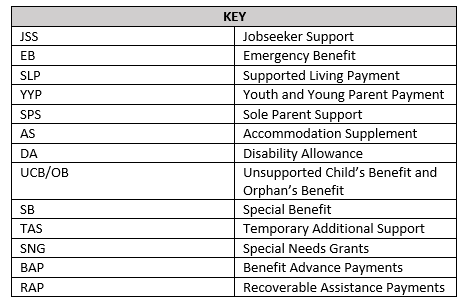2020 MSD Income Support Recipients and Expenditure
Figures 1 and 2 illustrate the number of recipients of, and Government expenditure on, three strands of MSD income support:
Main Benefits (approx. 390,000 recipients, $7.01 billion net expenditure)
Supplementary Assistance (approx. $2.95 billion net expenditure)
Hardship Assistance (approx. $971 million net expenditure)
While Jobseeker Support remains the biggest source of income support expenditure, these figures illustrate the Government’s continued reliance on Supplementary and Hardship Assistance – not just Main Benefits – to deliver income support.
The Accommodation Supplement remains a key mechanism of financial assistance, with a comparable number of recipients in Dec 2020 as all main benefit recipients combined. In these 2020/21 estimates, it accounts for roughly one fifth of all MSD income support expenditure.
N.B. To get estimated net spend of main benefits, a tax take of 10.5% for JSS and YYP and of 12.3% for SPS and SL was assumed.
Comparison of recipients and expenditure 2019 vs 2020
The Covid-19 pandemic had a marked impact on both the number of income support recipients and projected expenditure on MSD income support. In December 2020, the number of main benefit recipients was up by roughly 24% compared to December 2019 (~390,000 compared to ~315,000). As Figure 3 illustrates, the most significant increases have been in the number of Jobseeker Support recipients, up 44% in December 2020 compared to 2019.
The number of Accommodation Supplement recipients was also up significantly, an increase of 18% from roughly 320,000 recipients to 380,000. As CPAG highlighted in our 2019 report, The wrong tool to fix the house, the Accommodation Supplement is costly, and is money that largely goes towards rent to private landlords, thus not building or supporting an asset base for the state or for low-income tenants. Core incomes for all families should cover all basic needs, except in extraordinary circumstances, and the continued and increasing reliance on the Accommodation Supplement to cover housing costs reflects the inadequacy of incomes relative to housing costs, both for families on- and off-benefit.
Reliance on Hardship Assistance continued to increase between 2019 and 2020. Increases in recipients of, and expenditure on, Special Needs Grants and Temporary Additional Support also point to systemic income inadequacy relative to living costs. Families are not guaranteed these Hardship payments when they apply for them, and thus they are an insecure form of income, and not an adequate substitute for a liveable core income.






